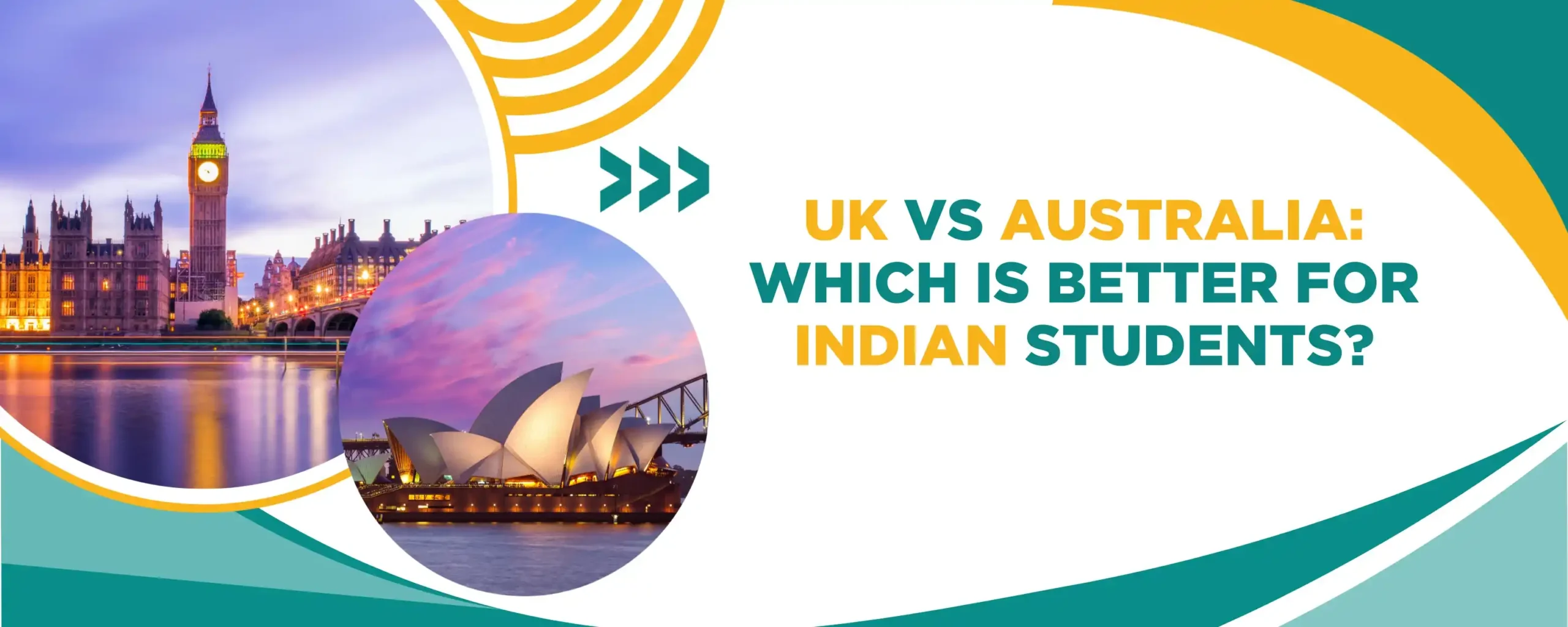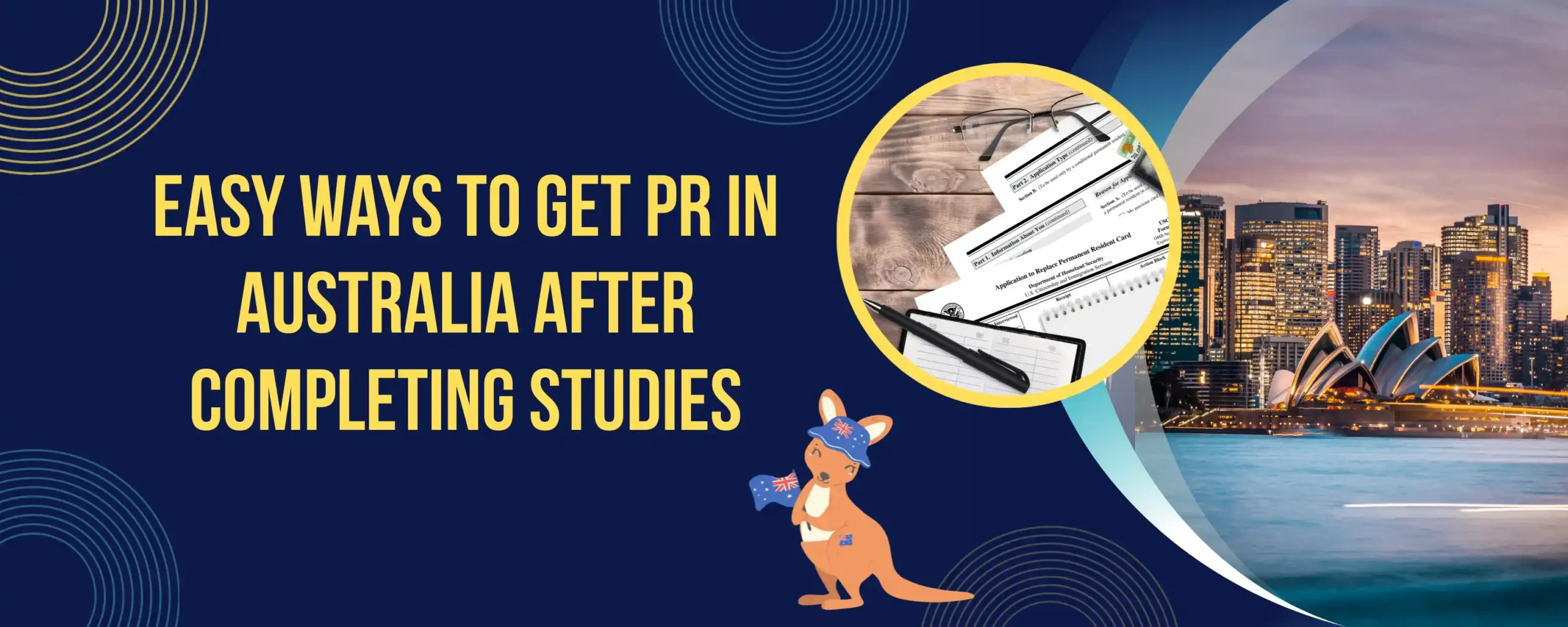Australia’s Post-Study Work Permit (PSWP) permits international graduates to gain invaluable work experience post completion of their studies. Australia remains a top destination due to its top-tier education, strong job market in various sectors like healthcare, as well as pathways to permanent residency. What’s important is staying up-to-date with 2025 policy changes as they influence eligibility, duration, and financial requirements.
What is a Post Study Work Permit in Australia?
A Post-Study Work Permit (PSWP) lets international students remain and work in Australia post completion of their studies. Its main purpose is to allow graduates to gain valuable work experience in Australia, utilising their academic knowledge in a professional setting. This permit not only acts as a bridge from academic life to the professional workforce, but also provides a legal path for graduates to secure full-time employment, develop industry-specific skills, build professional networks, and understand the Australian work culture. This experience can significantly enhance students’ global employability as well as serve as a stepping stone towards potential long-term residency options!
Types of Post Study Work Visas in Australia
Australia offers different visa pathways for international graduates.
- The Subclass 485 (Temporary Graduate Visa) has two major streams:
- Graduate Work Stream: This stream is majorly for international students with qualifications in occupations listed on Australia’s skilled occupation list, typically VET graduates. It permits graduates to stay in Australia up to 18 months, allowing them to gain experience in their chosen field.
- Post-Study Work Stream:This is for graduates with a bachelor’s degree or higher from an Australian institution. The duration varies based on the qualification, thereby providing a longer period for career development.
- The Subclass 407 (Training Visa) applies when graduates need specific workplace-based occupational training or professional development. It includes letting students gain practical skills, improve job prospects, alongside networking. It is ideal for graduates seeking to meet registration requirements or enhance skills in their field for up to 2 years!
- The Subclass 482 (Temporary Skill Shortage Visa), also known as the Skills in Demand (SID) visa, is a crucial stream for long-term employment. This stream allows graduates to transition by securing sponsorship from an Australian employer in a skilled position. This employer-sponsored visa allows temporary stay (up to 4 years!) and is crucial for those whose skills are in demand or those who wish to settle permanently in Australia.
Eligibility Criteria for Post Study Work Permit
General Requirements (Subclass 485 – Temporary Graduate Visa)
- Valid Student Visa: Graduates must have held an eligible student visa within the last 6 months (or be the holder of an eligible substantive visa or Bridging Visa A or B based on a student visa application).
- Completion of Eligible Qualification: Graduates must have completed a CRICOS-registered course from an Australian institution within the last 6 months.
- English Language Proficiency: Graduates must meet the required English language proficiency. Usually an IELTS 6.5 overall with no band less than 5.5, or equivalent is required, unless exempted by nationality.
- Age Limit: Graduates must be 35 years of age or under when applying. Exceptions are applied for Masters by research, Doctoral degrees, and Hong Kong/British Nationals.
- In Australia: Graduates must be in Australia when applying for the visa. Exceptions are applied for subsequent entrants.
- Health and Character: Graduates must meet health and character requirements. This includes obtaining an Australian Federal Police check as well.
- Health Insurance: Graduates must provide evidence of sufficient health insurance.
- No Previous PSWV: Graduates must not have previously held a Subclass 485 or Subclass 476 visa as a primary applicant.
Workstream-Specific Conditions
- Post-Vocational Education Work Stream (formerly Graduate Work Stream)
This stream:
- is for graduates with an associate degree, diploma, or trade qualification
- states that the qualification must be closely related to an occupation on Australia’s skilled occupation list (Medium and Long-term Strategic Skills List – MLTSSL)
- requires a skills assessment from a relevant assessing authority
- allows a stay of up to 18 months (Hong Kong and British National Overseas passport holders may stay for 5 years).
- Post-Higher Education Work Stream (formerly Post-Study Work Stream)
This stream:
- is for graduates with a bachelor’s degree or higher
- does not require the qualification to be on a specific occupation list
- states that the duration varies based on the qualification. For example: 2 years for a Bachelor’s degree, 3 years for Master’s/PhD
- states that graduates who studied in regional areas may be eligible for a second Post-Higher Education Work visa, thereby extending their stay
Duration & Validity of Post Study Work Visas
From July 1, 2024, several changes have impacted the duration of Australia’s Post-Study Work Visa (Subclass 485):
- Under the Post-Vocational Education Work Stream (formerly Graduate Work Stream), graduates with associate degrees, diplomas, or trade qualifications can now stay for up to 18 months.
- For the Post-Higher Education Work Stream (formerly Post-Study Work Stream), durations vary based on the degree as follows:
- Bachelor’s Degree (including Honours): Up to 2 years
- Master’s Degree (coursework and extended): Up to 2 years
- Master’s Degree (research) and Doctoral Degree (PhD): Up to 3 years.
Important note: The previous 2-year extension for select degrees in verified skill shortage areas has ended from mid-2024. However, special provisions still apply to:
- Hong Kong and British National Overseas passport holders, who may stay for up to 5 years
- Indian nationals under the AI-ECTA agreement may also have extended stays for specific qualifications
Application Process for a Post Study Work Visa
Applying for an Australian Post-Study Work Visa (Subclass 485) includes a structured process, with the following steps:
- Gather Required Documents
You’ll need:
- passport
- academic transcripts and completion letter from your Australian institution (stating course start and end dates, as well as CRICOS code)
- proof of English language proficiency like IELTS or PTE scores taken within the last 3 years
- evidence of adequate health insurance for your stay in Australia
- proof of having applied for an Australian Federal Police (AFP) check
- a skills assessment, depending on your stream
- Lodge an Application Online
All applications are submitted electronically through your ImmiAccount on the Department of Home Affairs website. You must make sure you select the correct stream (Post-Vocational Education Work or Post-Higher Education Work) since changing it after submission isn’t possible.
- Pay Fees and Submit Biometric Details
The visa application fee must be paid during the online submission. You may also be required to provide biometric data (fingerprints and photo) at a designated collection centre after lodging your application.
- Processing Time Expectations
Processing times for the Subclass 485 visa can vary. As of mid-2025, these times range from a few weeks to several months:
- For the Post-Higher Education Work stream, 50% of applications might be processed within approximately 31 days, with 90% within 68 days.
- The Post-Vocational Education Work stream may take longer.
However, keep in mind that factors like application completeness, peak periods, and individual circumstances can influence the actual duration.
Work Opportunities & Industries Hiring International Graduates
Australia offers excellent opportunities for international graduates.
- Healthcare is consistently in high demand due to an aging population, with consistent needs for nurses, doctors, and allied health professionals.
- The IT sector is also booming, with strong demand for software developers, cybersecurity specialists, and data analysts.
- Engineering graduates can also benefit from significant infrastructure projects and renewable energy initiatives.
- Finance and Education (especially early childhood and STEM teachers) also present strong career opportunities.
A Post-Study Work Permit can be invaluable for graduates since it enables them to gain crucial local work experience, bridging the gap between academic learning and professional practice. This experience can enhance their employability and competitiveness in the Australian job market.
Gaining relevant experience through a PSWP can make graduates eligible for various Permanent Residency (PR) pathways, such as:
- the Skilled Independent Visa (Subclass 189)
- Skilled Nominated Visa (Subclass 190)
- employer-sponsored visas like the Skills in Demand (SID) visa (Subclass 482).
These can all lead to the Employer Nomination Scheme visa (Subclass 186)
Can a Post Study Work Visa Lead to Permanent Residency?
Transitioning from a Temporary Graduate Visa (subclass 485) to Permanent Residency (PR) in Australia is the goal! The most obvious and major pathway is through General Skilled Migration (GSM), a points-tested program.
Graduates must look to aim for:
- Skilled Independent Visa (Subclass 189)
- This is a permanent visa for skilled workers not requiring state nomination or employer sponsorship.
- Eligibility is based on a points test (age, English, work experience, education, etc.) and an occupation on the Skilled Occupation List.
- Skilled Nominated Visa (Subclass 190)
- This is a permanent visa requiring nomination from an Australian state or territory.
- This provides 5 extra points and requires a commitment to live and work in the nominating state.
- Skilled Work Regional (Provisional) Visa (Subclass 491)
- This is a provisional visa requiring state nomination or family sponsorship in a regional area.
- It provides 15 extra points and is a pathway to PR after living and working in a regional area for three years (via Subclass 191).
Post Study Work Permit Australia 2025: Key Changes & Updates
Australia has introduced crucial changes to its Post-Study Work Visa (Subclass 485) and broader skilled migration recently. Here are some of the major updates:
- Reduced Stay Durations: The stay periods on the Post-Higher Education Work stream have been adjusted. Bachelor’s and Master’s (coursework) degree holders get 2 years, while Master’s (research) and PhD graduates get 3 years. The previous extension for select degrees is largely removed.
- Age Limit Reduction: The general age limit for applying for a Subclass 485 visa is now 35 years or under, with exceptions for Master’s by Research/PhD holders and specific passport holders.
- English Language Proficiency: Higher English language proficiency requirements have been implemented, with IELTS 6.5 overall, no band less than 5.5.
- Skills in Demand Visa (Subclass 482): The previous Temporary Skill Shortage (TSS) visa has been replaced by the “Skills in Demand” (SID) visa, offering more clear pathways to PR. This is particularly for occupations on the new Core Skills Occupation List (CSOL) to address skill shortages. This visa has different streams with varying income thresholds and processing priorities.
- Increased Visa Fees: Application fees for various visas, including the Subclass 485, have been increased.
Cost & Fees of Post Study Work Visa
As of 2025, the basic application charge for the Subclass 485 Temporary Graduate Visa (both streams) for the primary applicant is approximately AUD 2,235. Additional applicants over 18 cost around AUD 1,115, and those under 18 cost AUD 560.
Beyond the visa fee application costs, applicants must prepare for:
- Health Insurance (OVHC): This is mandatory for the entire duration of your visa. Monthly costs can range from AUD 100 to AUD 500+ depending on the choice of coverage and provider.
- English Test Fees: English proficiency exams like IELTS, PTE usually cost AUD 350-450 per attempt.
- Biometric Fees: This aspect usually costs AUD 2,000-2,500.
- Police Checks: An Australian Federal Police (AFP) check can cost up to AUD 56.
- Medical Examinations: Medical examinations can cost you around AUD 300-500, even more if you get additional tests done.
How to Improve Your Chances of Securing a Work Visa?
To maximize post-study opportunities at their disposal, international students must proactively gain relevant Australian work experience during their studies as well! This can be successfully achieved through part-time jobs, internships, and volunteering. Networking and building quality relationships within the chosen industry is equally vital. This can be attained by attending industry events, utilising university career services, and connecting with professionals on professional platforms like LinkedIn. Last but not the least, students must enroll in skill-based courses that directly align with Australia’s current and projected workforce demands, making sure your qualifications directly address skill shortages.
Studying in Australia? Enhance your career with expert study-abroad guidance at La Forêt Education. Explore programs at La Forêt Education.
Conclusion
Australia’s PSWP provides invaluable work experience and career growth for graduates. However, to efficiently avail the possible opportunities, students must actively stay updated on evolving 2025 visa policies, such as changes to duration, age limits, and English proficiency. Strategic advance planning, leveraging work experience, and aligning your qualifications with in-demand skills are important for a smooth transition from study to work and ultimately, achieving Permanent Residency in Australia!
Frequently Asked Questions
1. How long is the post study work permit in Australia?
Ans: The duration of a post-study work permit in Australia varies, ranging from 18 months – 3 years, depending on your qualification level and stream (Post-Vocational Education Work or Post-Higher Education Work), with some exceptions for specific passport holders.
2. Can I get work permit after 2 years of study in Australia?
Ans: Yes, if you have completed an eligible qualification from an Australian institution, you can apply for a post-study work permit after 2 years of study, provided you meet all other visa requirements.





